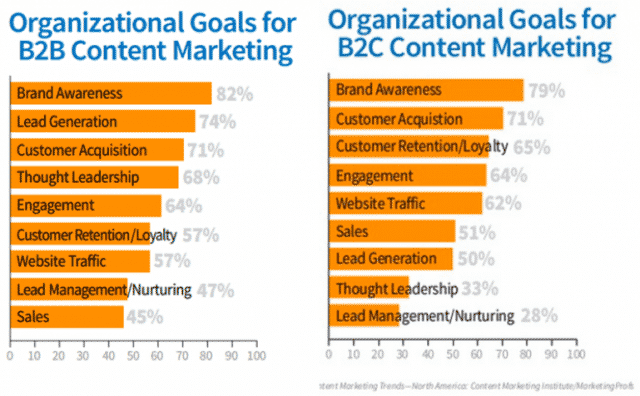Have you ever wondered how audiences feel after engaging with your brand and its content? Sure, they may be compelled to hit that “Like” or “+1” icon, but that doesn’t give much insight into why they liked it or what sort of response or emotions were invoked.
Yet, we know that strong emotional response can be a huge driver of content virality.
Need proof? Just think about every tear-inducing Budweiser Super Bowl commercial from the last five years (lost dog, immigration story, supplying disaster victims with water, horse and puppy best friends and so on).
So, how can we measure the emotions, both bad and good, stirred up by our content? The answer may be in the analysis of positive and negative sentiments in the comments and mentions that our content and business receives.
Let’s look at defining sentiment analysis and its advantages, disadvantages and how it can be effectively leveraged to help SEO and content marketing efforts.
What Is Sentiment Analysis?
By definition, sentiment analysis is, “the process of computationally identifying and categorizing opinions expressed in a piece of text, especially to determine if the writer’s attitude towards a particular topic, product, etc., is positive, negative or neutral.”
It’s important to note that sentiment analysis isn’t, as this definition suggests, limited to text; it can also be used to analyze speed.
To add a little clarity, it’s analyzing volumes of text or voice data for strings of words that signify the author is stating a positive, negative or neutral sentiment. By isolating these emotion-based opinions, you can quickly gain an understanding of your audience’s or customers’ overall attitudes and feelings.
For that reason, sentiment analysis is popularly used to explore opinions in reviews. Some companies have thousands of reviews between their brands, products, and services. It’s impossible to get an accurate picture of how people feel about your efforts without measuring their sentiments.
How Does Sentiment Analysis Help Improve Content?
Sentiment analysis isn’t just useful for products or review data, measuring opinions expressed in the comments sections of your blogs, videos or social media posts can also yield value and insight, especially if your content sees a lot of responses.
Consider the following visualizations expressing the top content marketing goals for B2B and B2C companies:

Many of these goals, brand awareness, thought leadership, customer loyalty/retention and others, are heavily influenced by how audiences feel about your company and its content.
It’s not just a matter of knowing what content pieces worked and which didn’t, but what specifically made people positively or negatively react. Measuring the opinions and feelings in your comment sections and other mentions can help you craft better content.
By zeroing in on these specifics, you can gain a clearer understanding of what topics resonate the most with the target audience, questions or thoughts that they have, their attitudes towards the tone or writing style and much more.
This allows you to craft content that is not only relevant but also more valuable to the reader, which helps build a strong customer experience to improve brand awareness and solidify your position as a strong thought leader.
Sentiment analysis can also be a handy tool to catch early warning signs of mechanical and spelling errors and other small mistakes that can distract from readability and engagement.
How Does Sentiment Analysis Help Improve SEO?
Website traffic, lead generation, and customer acquisition are all supported by strong SEO, especially with more and more people using search to research and discover new products and businesses. In fact, 2017 marked a strong year for search traffic, as it was the first year since 2014 that it outpaced social media as the biggest source of site visits at 35%.
As we discussed, sentiment analysis can help you find more relevant topics that resonate with what people are interested in learning about and discussing. This also yields promising insight into the keywords that may be beginning to trend, giving you an early chance to optimize for them ahead of your competition.
This is especially helpful when targeting question-based keyword phrases to rank for top-of-page featured snippets.
Studying sentiments in product reviews can vastly improve the SEO of your product descriptions and meta tags. Here, it’s less about the positive-neutral-negative spectrum and more a focus on the number of sentiments regarding a single feature or quality.
This can help a company understand the most important features of their products and the qualities that consumers are searching for the most.
As you study the sentiments of car models, you might find that a large percentage of the sentiments shared are focused on safety features. As an SEO, this is a great insight into how to focus efforts, like beginning to optimize for “cars with the best brakes” and similar phrases.
Similar to sentiment analysis’ ability to detect and alert of errors within the content, it can also signal to SEOs when users submit comments about broken links… which happens often.
What Are The Disadvantages Of Sentiment Analysis
Sentiment analysis is a powerful process that can empower a company to make better use out of its user-generated content (reviews, comments, brand mentions). However, like all strategies, it has its drawbacks as well.
Accuracy: Even a very sophisticated sentiment analysis tool needs to be monitored by a human and checked for errors.
Why? Well, simply because language is really, really, really difficult for machines to correctly understand 100% of the time. It’s why we’ve been seemingly on the cusp of sophisticated language translation for decades, yet still missing the mark.
Language changes. There are nuances to the way we speak and write that are dynamic and difficult for machine learning processes to handle. Sarcasm, slang, tone, context, colloquialisms, these can all affect meaning in big ways. Regarding sentiment analysis, these nuances can wreak havoc.
Bad is bad, but sometimes can be good or cool. We sarcastically say we love something when we don’t. We even invent new words or change the meanings of old ones, both intentionally and by accident.
Available Data: If you’re a smaller organization, you may not have many customers sharing their sentiments. Not only does this make a sentiment analysis less informative, but also less reliable. If you have only five or six opinions, attitudes or feelings shared about your company/products, and it’s not enough data to draw any valuable, accurate conclusions.
If you did, you’d be letting that small sample of people speak for the entirety of your customer base.
This is why asking for customer feedback is always an important strategy. It provides you with the actionable insights into what’s working and what needs to be improved, but it also grows your customer experience.
Many individuals want a platform to share their feedback, whether through a questionnaire, review site or comment section.
Thus, you should always make it easy for feedback to be given and make an effort to encourage its creation. You can incentivize the completion of a survey or simply end a blog or social media post with a question or thought to get the conversation in the comments started.
Emotions Are Complicated. It’s not just the language that makes sentiment analysis difficult and complex; it is also the emotions behind that language. It’s easy to look at sentiments in simple terms of positive, negative or neutral, but we’re rarely so black-and-white when we talk or write.
“I thought the coffee could be better.”
“I did not like the coffee.”
“I hated the coffee.”
“Worst cup of coffee of my life.”
All are negative sentiments, but they vary in degree. When you start getting your hands dirty with specific customer emotions and their varying degrees, things tend to take on a whole new level of complexity.
Starting Your Own Sentiment Analysis
One of the beautiful aspects of sentiment analysis is it’s inherently scalable. If you’re that small organization with only a handful of user sentiments, you don’t need to invest in a robust data tool; you can create a simple spreadsheet and grab each customer sentiment as its created.
As your business grows and more reviews and comments are generated, your needs grow, and you can scale your sentiment analysis toolkit to include a more advanced data product, possibly one capable of identifying different emotions.
It’s also worth mentioning that your competitors’ available sentiment data can be a useful source for consumer opinions, especially for a young organization with little of their own user-generated content.
While the brand-specific sentiments aren’t as actionable (though still good to identify the shortcomings of your competitors!), the insights into what people are interested in, their attitudes about the market as a whole and other clues, can be incredibly valuable for a new firm that is looking to build a reputation and understand a new customer base.
Conclusions
Keeping customers or leads engaged, interested and happy is one of the great challenges for businesses. Sentiment analysis creates an easy path towards measuring these emotions and identifying individuals that are dissatisfied and the reasons for their malcontent.
In turn, this allows a company to adjust its strategies to ensure a happier and longer lasting relationship with customers better.
Sentiment analysis has a number of different applications, but its impact on content and SEO efforts is something that any digital marketer should think about and consider investigating for their own needs.

